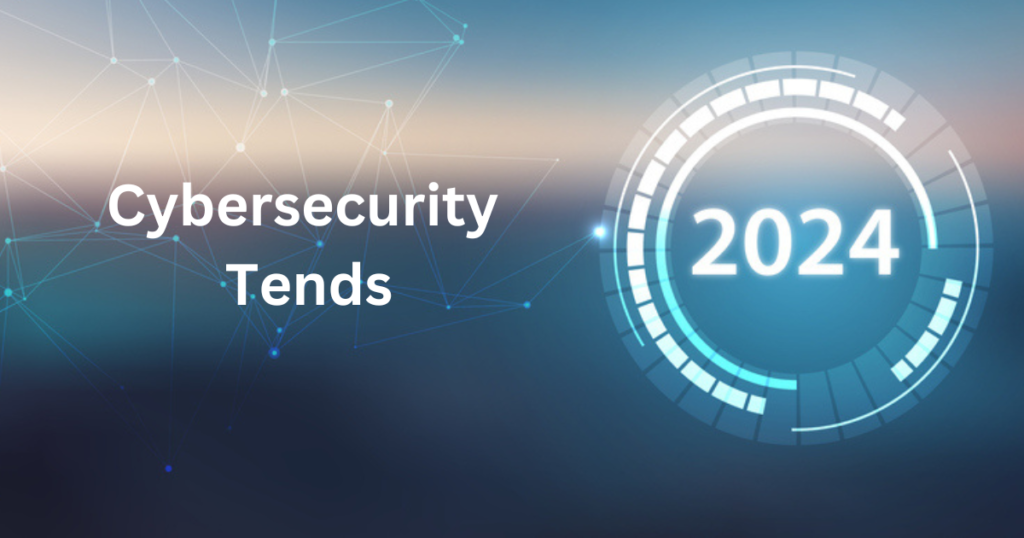Cybersecurity Trends in 2024
Cybersecurity is evolving rapidly, with new threats and solutions emerging almost daily. In 2024, we’ll see even more sophisticated strategies to combat cybercrime. Let’s dive into the key trends shaping the cybersecurity landscape this year.
Introduction
Cybersecurity is no longer just about protecting data; it’s about ensuring the continuity of our digital lives. As we step into 2024, several trends are set to redefine how we approach cybersecurity. From AI-powered attacks to the rise of Zero Trust Architecture, this year promises significant advancements and challenges in keeping our digital world safe.
The Evolving Landscape of Cybersecurity
The cybersecurity landscape is constantly changing, driven by technological advancements and evolving threats. Staying ahead of cybercriminals requires understanding the latest trends and adapting strategies accordingly.
The Rise of AI-Powered Cyber Attacks
Artificial Intelligence (AI) is a double-edged sword in cybersecurity. While it aids in threat detection, cybercriminals also leverage AI to create more sophisticated attacks, such as AI-driven phishing and malware.
Increased Focus on Cloud Security
With more businesses migrating to the cloud, ensuring cloud security has become paramount. 2024 will see a heightened focus on securing hybrid and multi-cloud environments.
Hybrid Cloud Solutions
Hybrid cloud solutions offer flexibility but also introduce security complexities. Effective strategies will be needed to manage these hybrid environments securely.
Multi-Cloud Security Challenges
Multi-cloud setups pose unique challenges, such as inconsistent security policies and increased attack surfaces. Addressing these will be crucial in 2024.
Zero Trust Architecture (ZTA)
Zero Trust Architecture is gaining traction as organizations realize the importance of verifying every access request. This approach minimizes the risk of internal and external threats by eliminating implicit trust.
Key Cybersecurity Trends in 2024
Let’s explore the key trends that will dominate the cybersecurity landscape in 2024. These trends are shaping how organizations protect their data and infrastructure.
Advanced Threat Detection and Response
With cyber threats becoming more sophisticated, advanced threat detection and response mechanisms are essential.
Behavioral Analytics
Behavioral analytics helps identify unusual patterns that may indicate a cyber threat, allowing for proactive threat mitigation.
Automated Incident Response
Automation in incident response reduces the time taken to address threats, minimizing potential damage.
Enhanced IoT Security Measures
The Internet of Things (IoT) presents a significant security challenge due to the sheer number of connected devices. Enhanced security measures are crucial.
Securing Smart Homes
As more homes become smarter, ensuring the security of these interconnected devices is vital to preventing unauthorized access and data breaches.
Industrial IoT Security
Securing industrial IoT devices, which are often critical to infrastructure, will be a priority to prevent large-scale disruptions.
Biometric Security Systems
Biometrics are increasingly used for authentication. 2024 will see advancements in biometric technologies and address associated privacy concerns.
Beyond Fingerprints: Facial and Voice Recognition
While fingerprint recognition is common, facial and voice recognition technologies are becoming more prevalent and sophisticated.
Privacy Concerns and Mitigations
Biometric data privacy is a significant concern. Measures to protect this sensitive information will be a focal point.
Cybersecurity Mesh
Cybersecurity mesh is an emerging approach that involves creating a flexible and modular security architecture.
Decentralized Security Perimeter
Unlike traditional security perimeters, a cybersecurity mesh allows for a decentralized approach, enhancing protection for remote workforces.
Integration with Existing Infrastructure
Integrating cybersecurity mesh with existing infrastructure can enhance overall security without a complete overhaul of current systems.
Blockchain for Enhanced Security
Blockchain technology offers potential for enhancing cybersecurity through secure transactions and decentralized identity management.
Secure Transactions
Blockchain’s inherent security features make it ideal for ensuring the integrity and security of transactions.
Decentralized Identity Management
Using blockchain for identity management can reduce the risk of identity theft and fraud by decentralizing identity verification processes.
The Role of Governments and Regulations
Governments play a crucial role in shaping cybersecurity practices through regulations and international cooperation.
Evolving Cybersecurity Regulations
Cybersecurity regulations are constantly evolving to address new threats and ensure data protection. Staying compliant is essential for businesses.
International Cooperation and Standards
International cooperation is necessary to combat global cyber threats. Standardized practices help create a unified defense front.
The Human Factor in Cybersecurity
Human error remains a significant vulnerability in cybersecurity. Addressing the human factor is critical to enhancing overall security.
Cybersecurity Awareness Training
Training employees on cybersecurity best practices can significantly reduce the risk of human error leading to breaches.
Addressing Insider Threats
Insider threats, whether malicious or accidental, pose a substantial risk. Strategies to mitigate these threats are essential.
Conclusion
As we navigate through 2024, the importance of robust cybersecurity measures cannot be overstated. With emerging technologies and evolving threats, staying informed and proactive is key to safeguarding our digital lives.
FAQs
What is Zero Trust Architecture?
Zero Trust Architecture is a security model that requires strict verification for every user and device trying to access resources, minimizing the risk of breaches.
How can AI be both a threat and a solution in cybersecurity?
AI can enhance cybersecurity by detecting threats quickly, but it can also be used by attackers to develop sophisticated cyberattacks.
Why is cloud security more important now?
With the increasing shift to cloud services, ensuring data protection and compliance in the cloud has become crucial.
What are the benefits of biometric security systems?
Biometric systems offer enhanced security through unique personal identifiers, though they come with privacy concerns that need addressing.
How does blockchain enhance cybersecurity?
Blockchain provides secure and immutable transactions and can decentralize identity management, reducing fraud and theft risks.


